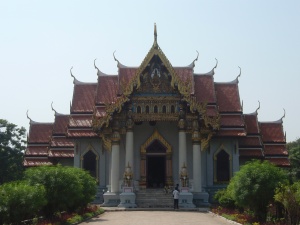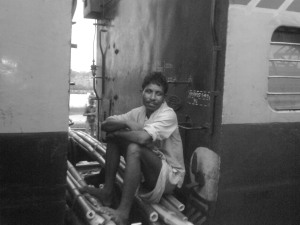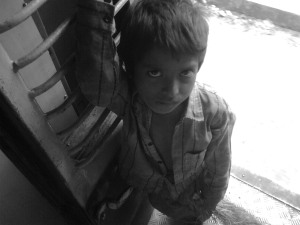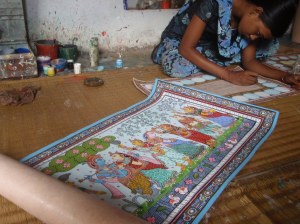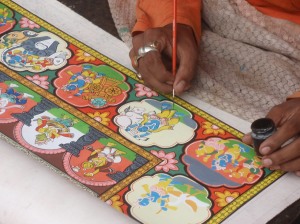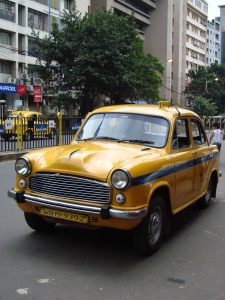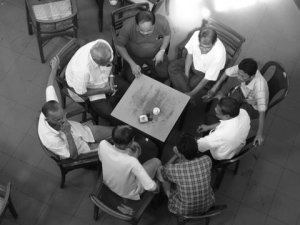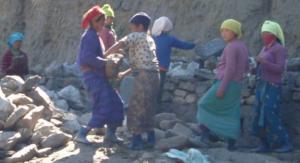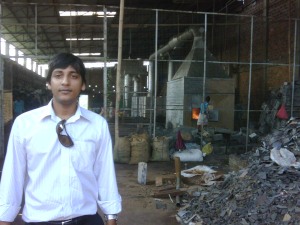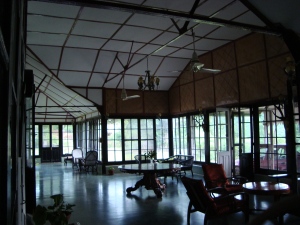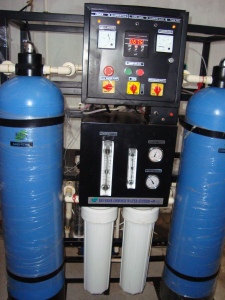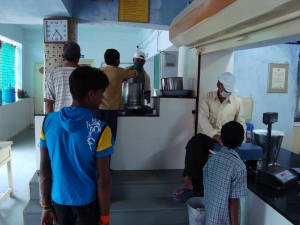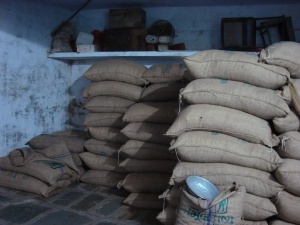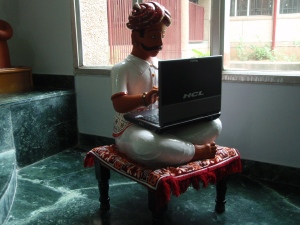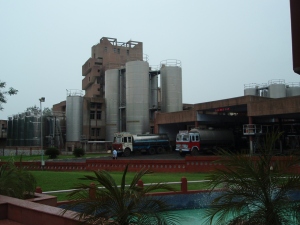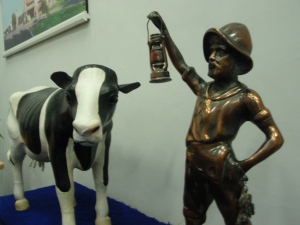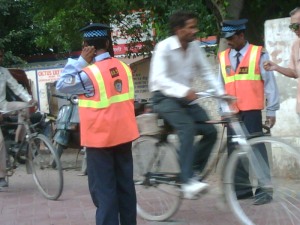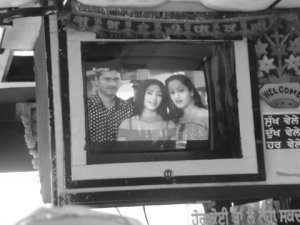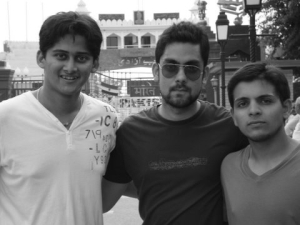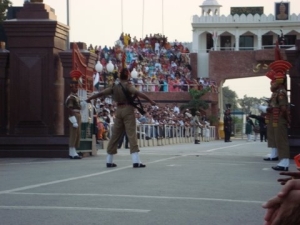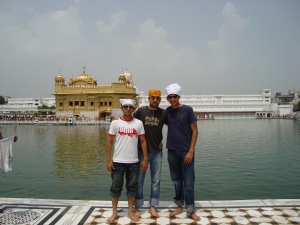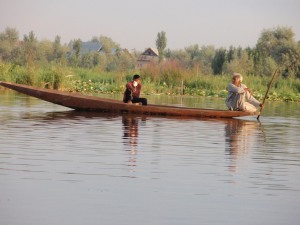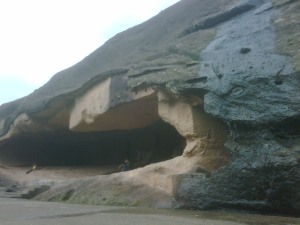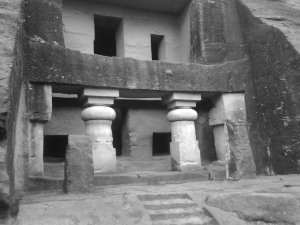Amongst the several national themes that kept our minds busy, “Japan in India” is one that appeared consistently throughout legs 1 and 2, and would at times surface when we least expected it. Aside from the routine Honda car showroom, Sony outlets, and Yamaha motorcycles parked outside nearly every dhaba/tea vendor we visited, the presence of Japanese companies and culture in India is palpable.
During our visit to Ludhiana (India’s manufacturing hub) in Leg 1, we were fortunate to have visited the factory of Rajnish International, which specializes in the manufacturing and export of diesel fuel injection spares and other components for the auto industry. While Rajnish takes pride in having developed the vast majority of its production technology in-house, we were shown one Fanuc machine that performs an aspect of the steel cutting process that is too intricate for the domestic technology.
Fast forward to our trip to Kolkata, where we visited the manufacturing facility of formal menswear brand, Success, and learned that all of their polyester is imported from Teijin Fibers. The Japanese textile manufacturer’s product is described as superior to its cheaper Chinese counterparts in fabric quality and dye (particularly black), and this gives Teijin its edge. In Aizawl, we spotted DVD’s of Japanese soap operas being sold on the street (although Korean dramas were more popular) and L&T-Komatsu construction equipment at work on the road from the airport to the hotel. In Bodhgaya, we visited Japanese shrines and encountered several hotels and restaurants with signs catered to the hoards of Japanese tourists. Even at home in Mumbai, TATA Hitachi machinery can often be seen at construction sites and the annoyingly catchy tune of TATA DoCoMo ads has us reaching for our remotes during commercial breaks.
Aside from private ventures, projects are being undertaken on a government-level to strengthen economic ties: the USD 90 billion Delhi-Mumbai Industrial Corridor being in the spotlight. In September 2009, the Indian Union Cabinet approved an INR 17,700 crore (USD 3.7 billion) conditional loan from Japan to help build the western arm of the corridor. The condition is simple: give the biggest contracts to Japanese companies. As mint points out, the conditions officially state that 1/3 of the total contracts must go to Japanese firms. However, if India uses Japanese equipment to build a part of the corridor, chances are high that it will have to use Japanese equipment to build the whole thing.
In Delhi, we were lucky to meet with Amitabh Kant, Principal Secretary & Special Commissioner, Industries (Government of Kerala) and CEO of the DMIC. He articulated that the project will be managed by an entity resembling a private company, which will effectively streamline the entire investment process for Japanese companies looking to be a part of the project. This is comforting when picturing a scenario where Japanese delegates and their interpreters have to struggle with local agencies for land acquisition rights or a consistent supply of power and water.
The DMIC will certainly serve as a cornerstone of the economic relationship between the two countries, as mint anticipates it will attract new investments of ~USD 50 billion and create jobs along the corridor for several years. While it took slightly longer to hit news pages in Japan, the project finally received coverage in the Nikkei this month and is gradually gathering excitement in the Far East.
As Japan copes with soon becoming the world’s number 3 economy, the need to maintain a close economic relationship with India will only get stronger. Demographically, India is the dream partner for a graying Japan who has slowly but surely been running out of gas. On the flip side, Japan has the organizational and technical expertise to create the infrastructural foundation that India needs to reach the next stage of its development. The hope is that more private ventures and projects like the DMIC are implemented and that politics do not get in the way of what can evolve into one of the world’s most powerful and lucrative economic partnerships.







































